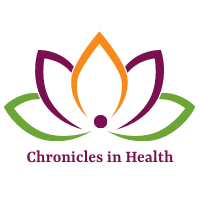The food additives nitrites and nitrates have been in the good-for-you/bad-for-you debate for quite some time. The USDA approved nitrites in 1925 for use in curing meats but in the 1970’s, mounting evidence as to the possible negative health concerns came to light.
Both nitrites and nitrates occur naturally in the human body, in some fruits and vegetables, and in water. In the body, nitrite and nitrate circulate from the digestive system into the blood, next to salvia, and back into the digestive system. It is thought they possible function as antimicrobials in the digestive system. Fruits and vegetables also contain naturally occurring nitrites and nitrates; raw spinach, beets, celery, and lettuce can be very high in these compounds. Nitrate can occur naturally in water, and amounts can increase with the use of nitrogen-based fertilizers that then can make its way into the ground water.
Nitrate and nitrite contents of edible components of vegetables
| Vegetable types and varieties | Nitrite | Nitrate |
| mg/100 g fresh weight | mg/100 g fresh weight | |
| Root vegetables | ||
| Carrot | 0.002–0.023 | 92–195 |
| Mustard leaf | 0.012–0.064 | 70–95 |
| Green vegetables | ||
| Lettuce | 0.008–0.215 | 12.3–267.8 |
| Spinach | 0–0.073 | 23.9–387.2 |
| Cabbage | ||
| Chinese cabbage | 0–0.065 | 42.9–161.0 |
| Bok choy | 0.009–0.242 | 102.3–309.8 |
| Cabbage | 0–0.041 | 25.9–125.0 |
| Cole | 0.364–0.535 | 76.6–136.5 |
| Melon | ||
| Wax gourd | 0.001–0.006 | 35.8–68.0 |
| Cucumber | 0–0.011 | 1.2–14.3 |
| Nightshade | ||
| Eggplant | 0.007–0.049 | 25.0–42.4 |
In the modern food supply, the greatest number of nitrites and nitrates will be found in processed or cured meats. They are considered an essential curing ingredient. There are four main areas that quality is impacted:
- Color – nitrites/nitrates help to produce the desirable red color of cured meats. Without them, these cured meat products would turn brown.
- Flavor is also affected but scientists have not totally discovered how it affects the aroma, texture, and taste.
- Lipid Oxidation – lipids are fats and oxidize easily, nitrites/nitrates can delay the development of oxidation rancidity.
- Bacteria Control – there has been varying degrees of effectiveness on preventing or controlling the growth of certain bacteria.


Nitrites and nitrates in themselves don’t necessarily cause a problem; it is actually what happens to them with preparation and once in the body. They can convert to either nitric oxide or nitrosamines.
- Nitric oxide can dilate blood vessels and lower blood pressure, each of these two things is health promoting.
- Nitrosamines can be hazardous to the body and can increase the risk of cancer. Nitrosamines are some of the main carcinogens of tobacco smoke. There have been more than 65 different nitrosamines detected in a variety of foods including cheese, meat, mushrooms, and alcoholic beverages.
Processed meats are probably the greatest source of nitrates and nitrites and have the greatest potential to produce nitrosamines. Processed meats such as bacon, hot dogs, and sandwich meats often contain high amounts of sodium nitrite. They are also high in protein. On exposure to high heat, this combination creates the perfect conditions for nitrosamines to form. Manufacturers are now required to limit the number of nitrites used in processed meats, and they are required to add vitamin C to inhibit nitrosamine formation. Fruits and vegetables may have some level of vitamin C to inhibit nitrosamines from forming when you eat them.
As you can see, nitrites and nitrates can be beneficial when found in their natural state, but when used as a food additive, precautions should be taken.
Tips to Limit synthetic nitrites/nitrates:
- Minimize consumption of processed foods and cured meats.
- Read labels and avoid nitrites and nitrates; they are often combined with sodium or potassium.
- Organic foods will not have synthetic nitrites or nitrates as it is not allowed in organic processed food or meat.
- Check your local water supply for nitrates/nitrites. You can check here for your local water supply information. If you have well water, check with your health department if it is a problem in your area or have your water tested.
- Eat a diet high in antioxidants. Vitamin C and other vitamins can reduce the conversion of nitrites/nitrates into nitrosamine.
Limiting synthetic nitrites and nitrates can be beneficial to your health. You can do this by eating whole foods, prepared yourself; it is one of the best investments you can make in yourself. Do you read labels? Do the ingredients determine if you buy a certain food?
Be blessed and be a blessing,
Heather
Posts may contain affiliate links. If you purchase a product through an affiliate link, your costs will be the same but Chronicles in Health will receive a small commission. This helps cover some of the costs for this site. I appreciate your support!
The information, including but not limited to, text, graphics, images and other material contained on this website are for informational purposes only. The purpose of this website is to promote broad consumer understanding and knowledge of various health topics. It is not intended to be a substitute for professional medical advice, diagnosis or treatment. Always seek the advice of your physician or other qualified health care provider with any questions you may have regarding a medical condition or treatment and before undertaking a new health care regimen, and never disregard professional medical advice or delay in seeking it because of something you have read on this website.
Sources:
- www.themeatsite.com/articles/contents/nitrite_report.pdf
- www.sciencedirect.com/science/article/abs/pii/S1089860312000547
- www.livescience.com/36057-truth-nitrites-lunch-meat-preservatives.html#:~:text=The%20preservative%20sodium%20nitrite%20fights,into%20molecules%20that%20cause%20cancer.
- www.healthline.com/nutrition/are-nitrates-and-nitrites-harmful
- academic.oup.com/ajcn/article/90/1/1/4596750
- academic.oup.com/view-large/110696380
- www.healthline.com/nutrition/are-nitrates-and-nitrites-harmful#minimizing-exposure
- www.ewg.org/childrenshealth/20214/how-avoid-added-nitrates-and-nitrites-your-food
- www.mdpi.com/2076-3921/9/3/241/htm
- www.rivm.nl/bibliotheek/rapporten/2016-0208.pdf
- books.google.com/books?id=vus1aZ1-sCkC&pg=PA430&lpg=PA430&dq=current+allowed+ingoing+nitrites+in+food&source=bl&ots=5k6R64wHwa&sig=ACfU3U38ANZ-RtgXfEfvjI83hP7l86abmg&hl=en&sa=X&ved=2ahUKEwjLj4Kn2crqAhWlAZ0JHTiPBJoQ6AEwEXoECAwQAQ#v=onepage&q=current%20allowed%20ingoing%20nitrites%20in%20food&f=false


